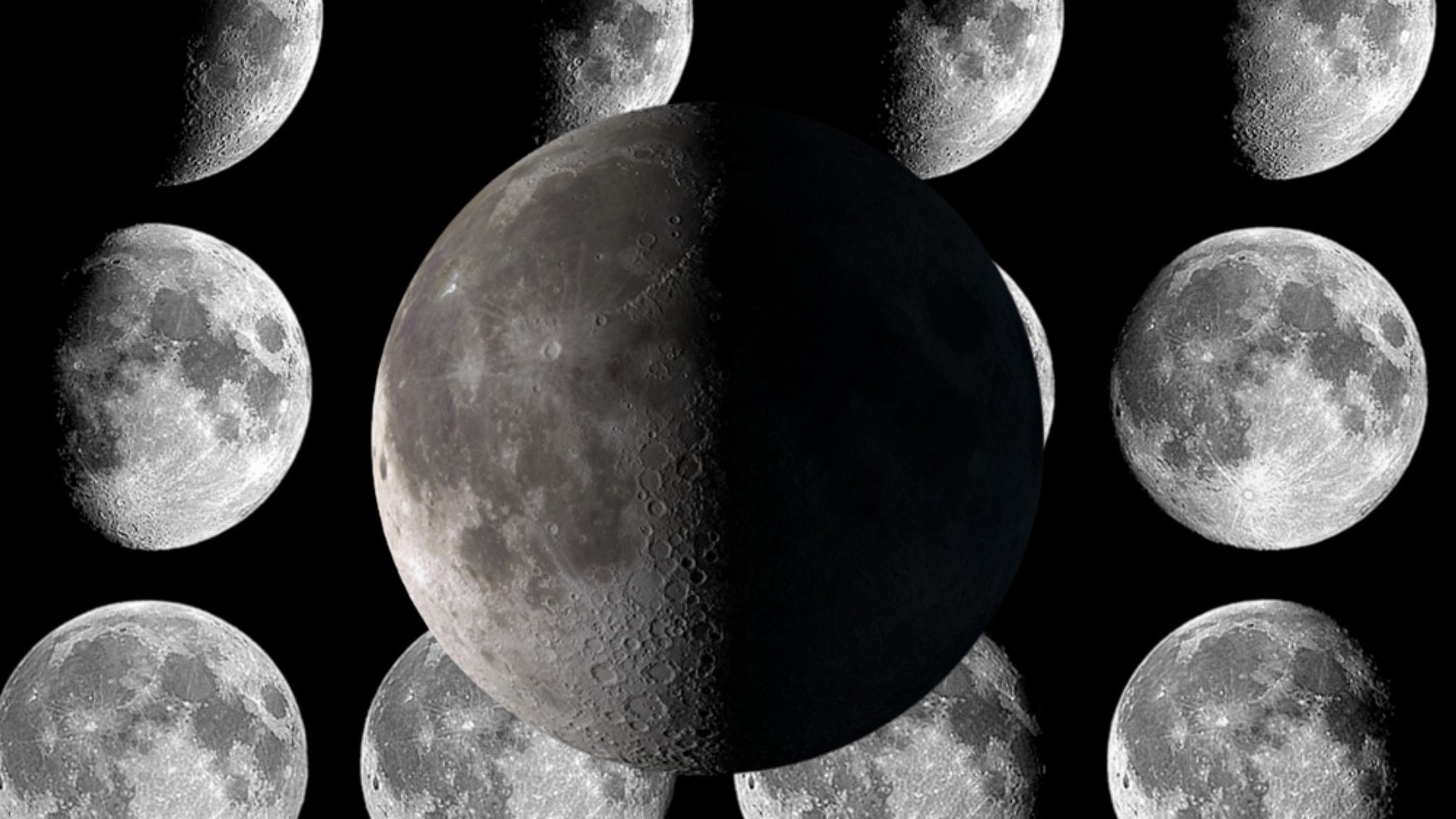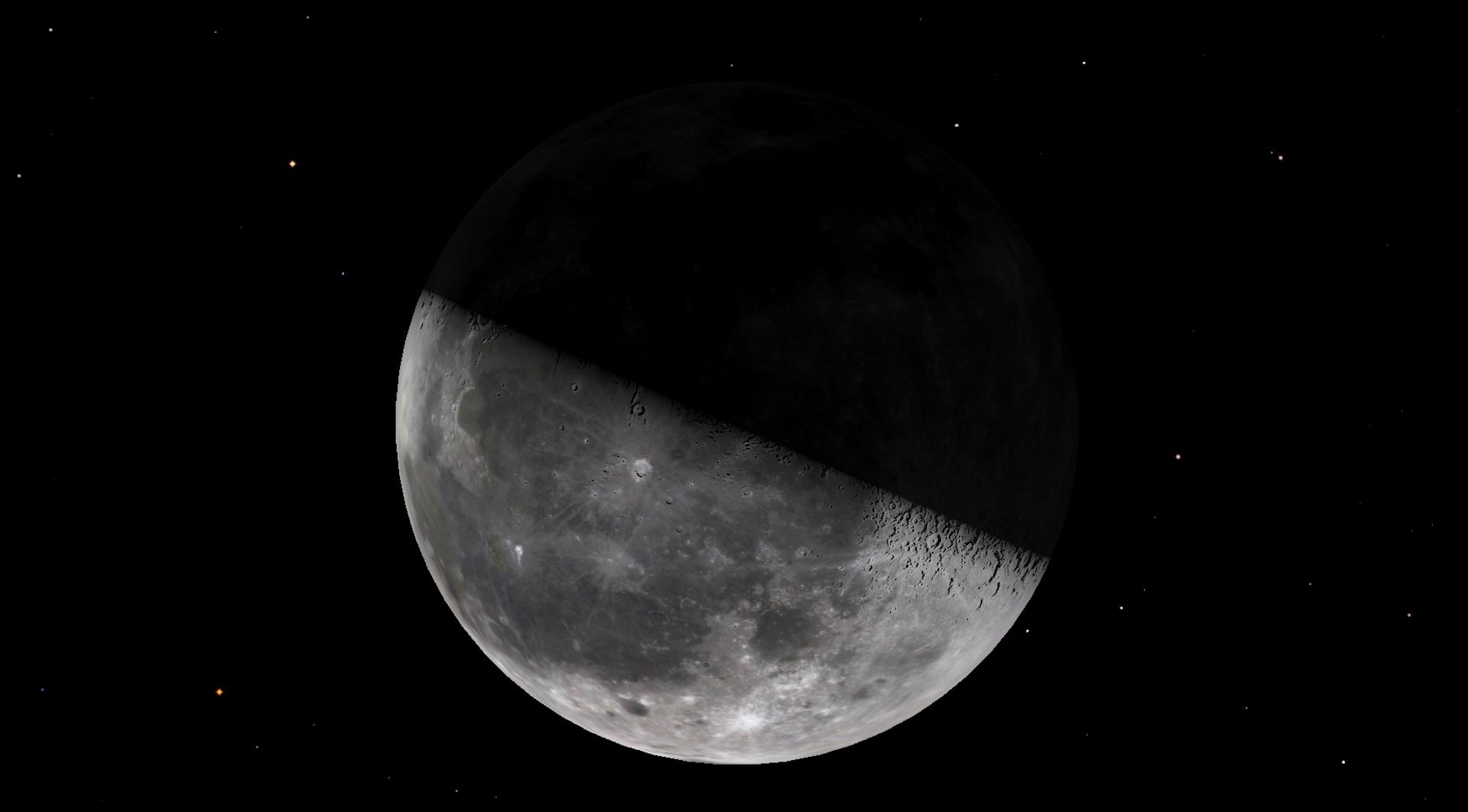See the moon in its half-lit last quarter phase tonight (Jan. 14)
The moon is half-illuminated again at the weekend as it heads to February's full moon, the Snow Moon.

On Saturday (Jan. 14) the face of the moon will be half-illuminated as it enters its third quarter or last quarter phase.
According to In the Sky for observers in New York City, the last quarter moon will rise at 22:20 EST (0320 GMT) and will become visible soon after at around 00:18 on Sunday, Jan. 15 (0518 GMT). The last quarter moon will remain visible through sunset and until around 11:28 EST (1628 GMT).
The last quarter moon is the point in the 29.5-day lunar cycle that falls exactly begin its halfway point, the full moon, and the beginning of the next lunar cycle and the new moon. As the lunar phase proceeds from the last full moon, January's Wolf Moon which rose on Friday, Jan.6, to the next new moon the illuminated lunar face recedes or "wanes."
Related: Full moon calendar 2023: When to see the next full moon
Going from the fully illuminated full moon to the completely dark new moon, the mid-way point, the last quarter is when the waning moon is half illuminated.
The situation is reversed as the new moon, which next occurs on Jan. 21, progresses to the next full moon, the Snow Moon which rises on Feb. 5. The illuminated side of the moon grows or "waxes" with the waxing moon once again half illuminated on Jan.28 during a phase of the lunar cycle called the first quarter. Which side of the moon observers see illuminated during both the last and first quarter phases depends on where they are located on Earth.
The fact that the moon is half illuminated during the two "quarter" phases may seem confusing, but what the monikers actually refer to is the fact that the moon is one quarter and then three quarters of the way through its lunar cycle, respectively, during the first and last quarter phases.
Get the Space.com Newsletter
Breaking space news, the latest updates on rocket launches, skywatching events and more!

The illumination of the moon isn't the only thing that changes as the moon moves from the full moon phase to the new moon phase, as it will also become visible at different times of the day. Leading from the full moon, the moon rises later and later each day. It also reaches progressively lower points over the horizon to the east.
By the time of the new moon, the moon will rise around dawn and will set at approximately dusk, meaning that it is only visible during the daytime.

Want to get a closer look at the moon? We recommend the Celestron Astro Fi 102 as the top pick in our best beginner's telescope guide. Don't forget a moon filter!
Once again, the situation is reversed leading from the new moon through the first quarter moon to the full moon with the moon rising earlier each subsequent day and reaching a higher point over the horizon. By the time of February's Snow Moon, it will rise at dusk and set at dawn meaning it is visible for most of the night.
If you're hoping to take a close look at the last quarter moon, our guides for the best telescopes and best binoculars are a great place to start. If you're looking to snap photos of the night sky, check out our guide on how to photograph the moon, as well as our best cameras for astrophotography and best lenses for astrophotography.
Editor's Note: If you snap the last quarter moon, and would like to share it with Space.com's readers, send your photo(s), comments, and your name and location to spacephotos@space.com.
Follow us on Twitter @Spacedotcom or on Facebook.
Join our Space Forums to keep talking space on the latest missions, night sky and more! And if you have a news tip, correction or comment, let us know at: community@space.com.

Robert Lea is a science journalist in the U.K. whose articles have been published in Physics World, New Scientist, Astronomy Magazine, All About Space, Newsweek and ZME Science. He also writes about science communication for Elsevier and the European Journal of Physics. Rob holds a bachelor of science degree in physics and astronomy from the U.K.’s Open University. Follow him on Twitter @sciencef1rst.









